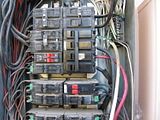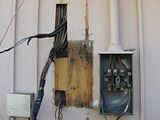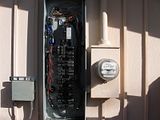Here are some pics of what should have been a simple panel change.
Original AC breaker was bad and would trip occaisionally during our famous summers. I replaced the breaker last summer to provide temp power and left a big note on the panel.

Neighborhoods built in the early 60's here have 3 phase delta feeding them just to power the AC's. I am guessing that in the olden days, AC's were only available in 3 phase???? Most of these installations had a delta breaker installed in a single phase panel. The high leg was fed into the breaker straight from the meter. It picked up the other two legs from the bus.
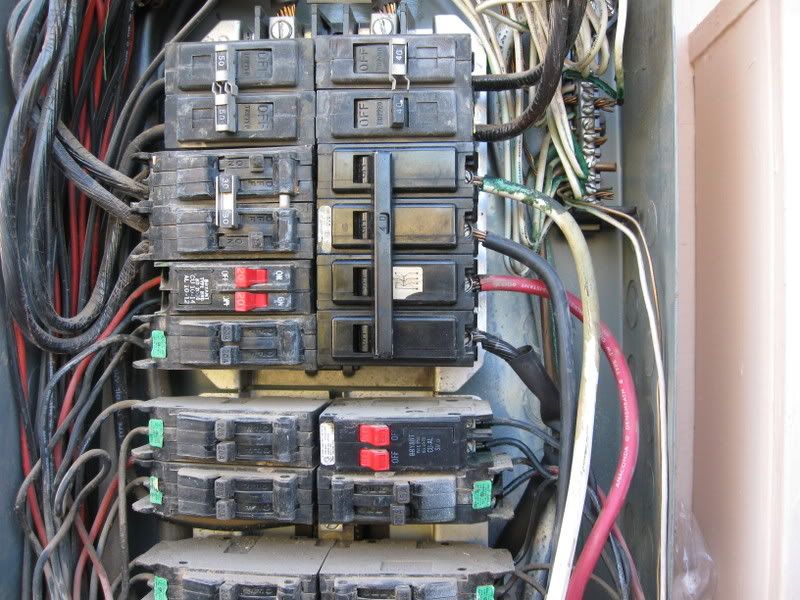
The only 3 phase meter panel combo comes with 24 spaces. Not enough when you can only use 2/3 of them so I try to leave the meter can in place and just change out the panel when I can.
I don't know what the green stuff was. It felt like paint and it was still wet!. They used white paint to identify the neutral. The green wire was not painted.:-?
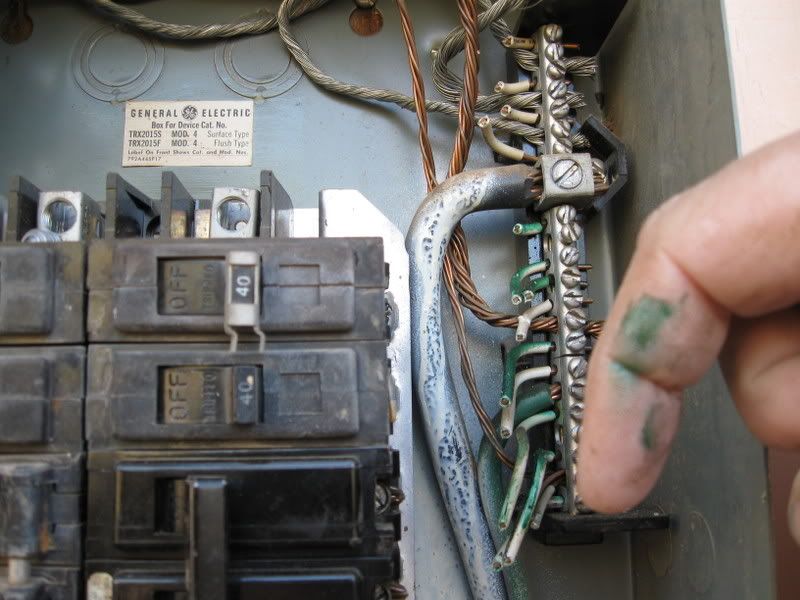
I disconnected all the wiring and pulled the panel screws but it wouldn't budge. They put the chase nipples behind the siding.
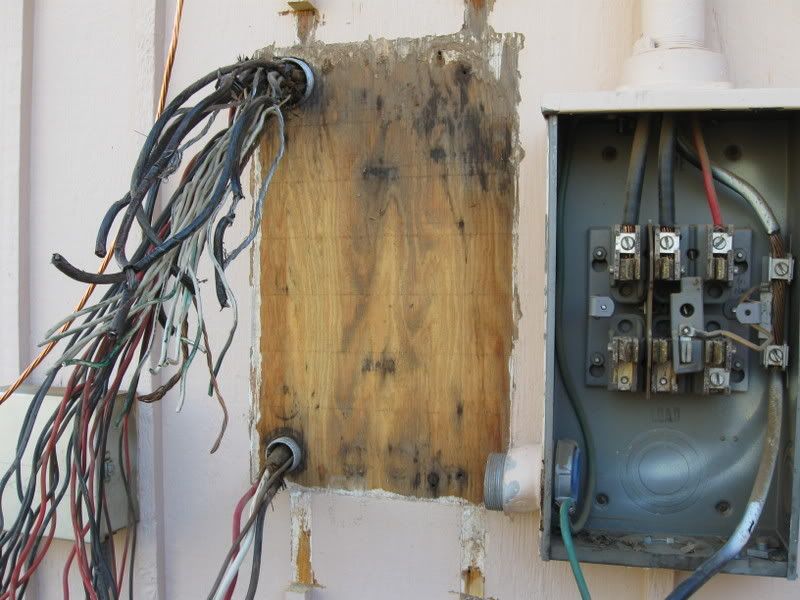
I chopped out some siding so I could enter the panel in 3 different locations for a cleaner install.
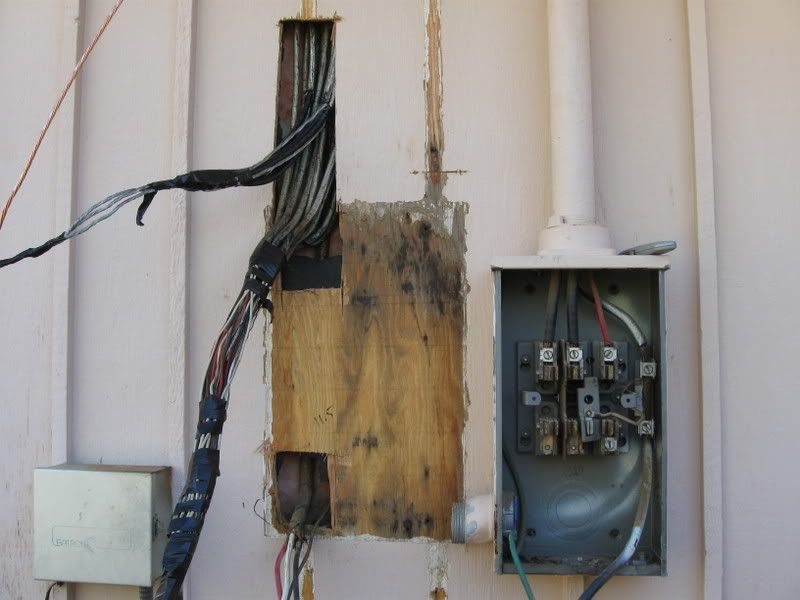
I'll get a better pic of the interior tommorrow so we can play spot the violations. I absolutely hate wire nuts in a panel but the SE was just too bad to use so I cut off as much as I could. It looks fine with the cover on
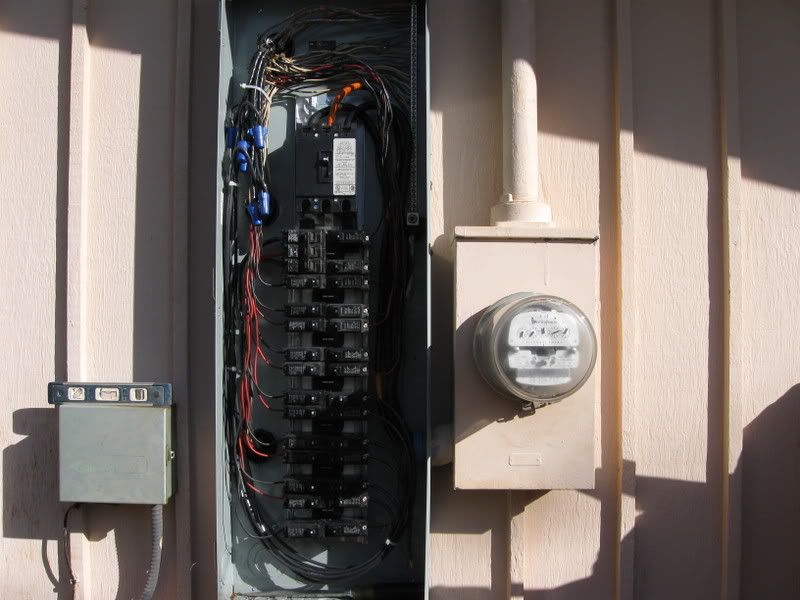
Original AC breaker was bad and would trip occaisionally during our famous summers. I replaced the breaker last summer to provide temp power and left a big note on the panel.

Neighborhoods built in the early 60's here have 3 phase delta feeding them just to power the AC's. I am guessing that in the olden days, AC's were only available in 3 phase???? Most of these installations had a delta breaker installed in a single phase panel. The high leg was fed into the breaker straight from the meter. It picked up the other two legs from the bus.

The only 3 phase meter panel combo comes with 24 spaces. Not enough when you can only use 2/3 of them so I try to leave the meter can in place and just change out the panel when I can.
I don't know what the green stuff was. It felt like paint and it was still wet!. They used white paint to identify the neutral. The green wire was not painted.:-?

I disconnected all the wiring and pulled the panel screws but it wouldn't budge. They put the chase nipples behind the siding.

I chopped out some siding so I could enter the panel in 3 different locations for a cleaner install.

I'll get a better pic of the interior tommorrow so we can play spot the violations. I absolutely hate wire nuts in a panel but the SE was just too bad to use so I cut off as much as I could. It looks fine with the cover on




